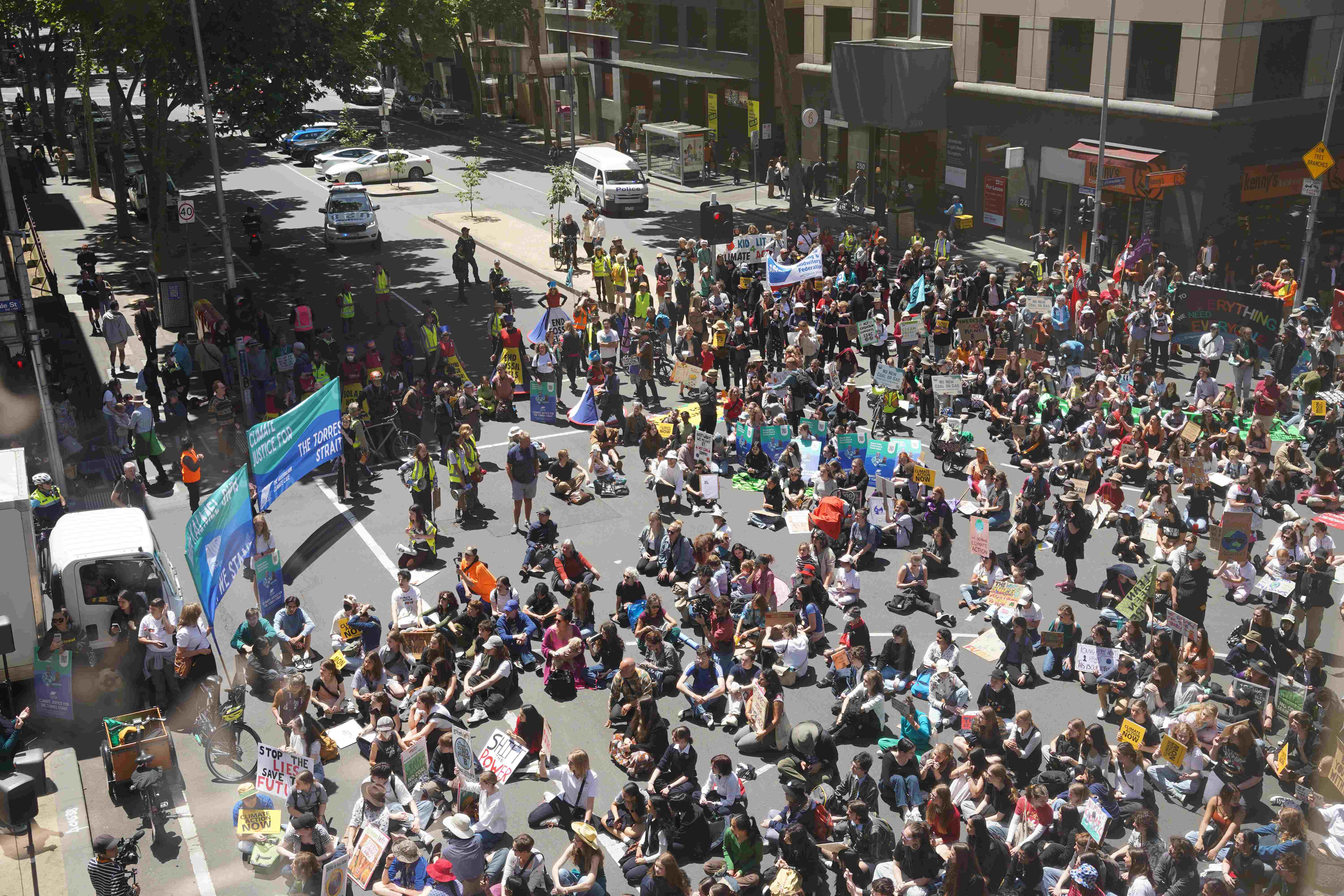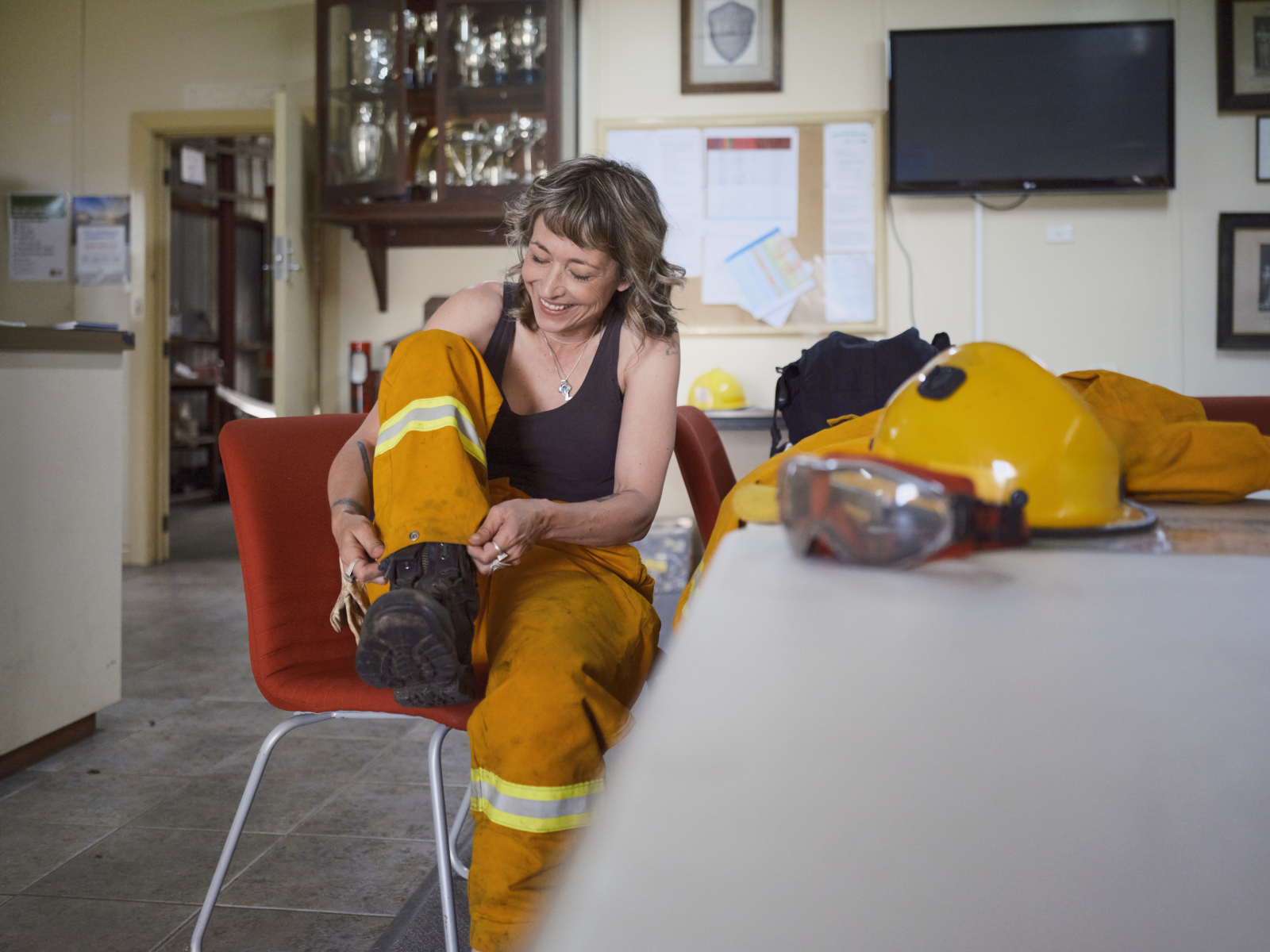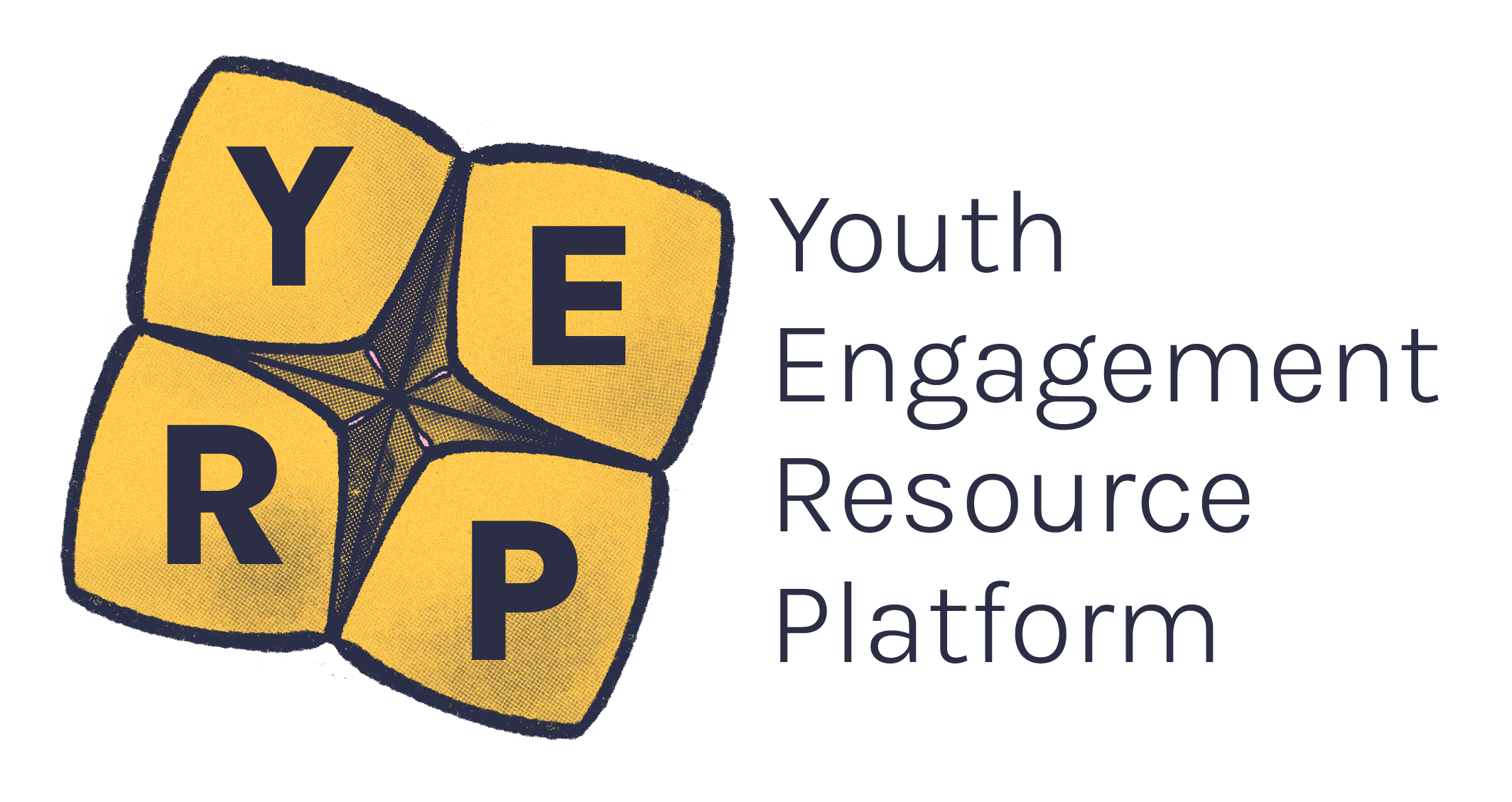The challenges that our environment faces, and climate justice efforts have captured the attention of many young people.
This passion and enthusiasm is being translated into powerful work and activism, both for young people and the organisations they’re working and volunteering with.
These young people are motivated and have unique skills and expertise to contribute — whether working with you or in your organisation more broadly.
The Environmental Volunteering Social Research Report found significant interest within the Victorian community to get involved in environmental volunteering. In particular, getting out into nature holds real appeal.1
Beyond this, volunteering can be a really great way for young people to develop their personal and professional skills, while doing something that’s fun and meaningful.2
Volunteering also offers the opportunity for young people to connect with organisations and networks in their sector of interest. It can offer a great first step into these industries or help to foster continual learning as a professional.2
So… young people are keen. Utilise them!
A group of hands holding plant seedlings surrounded by the words ‘connection’, ‘together’, ‘diverse’, ‘community’, ‘hard work’, ‘youth’, ‘support’, ‘intergenerational’, ‘environment’, ‘green’. Illustration by Rin Naylor-Degraaf.

This indicates a barrier around people’s understanding of the available options. In particular, the Victorian Government Environmental Volunteering Social Research Report found a fear of committing to ongoing volunteer work.
For young people especially, it can be hard to sign on to an ongoing project, when considering the competing demands of work, study and a broader social life or family commitments. This can be especially true for young carers or young parents, whose time, energy and financial resources can be stretched thin.1
To address this, consider the following:
- Offer a range of volunteering opportunities with a mix of time requirements and engagement styles.
- Offer online and in-person work, as well as a range of short-term and long-term opportunities.
Young people should feel supported in finding a volunteer role that suits their needs and schedules.
Also, remember that they’re not getting paid. This can put financial stress on the young person, and they may need to pause their volunteering for paid work, so be understanding of this.
Similarly, it’s important to think about what else they may gain from volunteering to make it worth their time. Think about possible networking opportunities, upskilling, building confidence, etc.
The Victorian Government Environmental Volunteering Social Research Report found that the environmental sector struggles to draw people’s attention through messaging and media. Young people receive information from a range of platforms, from newsletters, social media, and word of mouth – so it’s important to expand your promotion.1
Ways to expand promotion could include:
- Considering social media platforms that young people use like Instagram, TikTok or Twitch.
- Think about how they are different, and their strengths and weaknesses. Use these to your advantage to get opportunities out there.
For more guidance on connecting with young people online, check out VicHealth and The Lab's Youth Communication and Engagement Playbook.
The report also suggested that people respond best to messaging that is short and succinct1. Consider:
- Including an engaging call to action in your advertisements.
- Linking to more information where needed.
- Talking about the tangible outcomes that the volunteering program can result in
- Highlighting how the work contributes to a broader cause.
- Using values-based motivations (the report found these were the most influential, followed by motivations to learn and connect with community).
The Department of Energy, Environment and Climate Action (DEECA) and YACVic’s Youth Environmental Advisory Group (2022) gave additional insight into young people’s needs.
They suggested advocacy is a central way for young people to make a difference in environmental issues, and investment should be prioritised here.
Further, the usability, accessibility and attractiveness of An approach where volunteers, in partnership with scientists, participate in scientific projects. It is a powerful way for people to connect with nature, help protect it, learn new things, improve diverse skills, and meet like-minded people.citizen science apps should be improved and promoted to young people. Young people also want to be valued and acknowledged for their contributions and develop transferable skills that they can showcase in future.
Think about what the young person can get out of this, not just the benefits that their volunteering will bring you. Think about what the young person can get out of this, not just the benefits that their volunteering will bring you.
A birds eye view photo of a crowd of young people at a School Strike 4 Climate in the CBD, on Wurundjeri Country.

To retain young volunteers, it’s important to cultivate a sense of belonging while ensuring that young people are having fun, building new skills, and expanding their networks.
Above all, it’s important to recognise that young people are managing multiple priorities. From work and study, to being carers, or having family or cultural responsibilities. As such, adaptable and flexible volunteering opportunities are key.
Learn more:
- Read the summary of the YACVic Environmental Volunteering Youth Expert Advisory Group’s findings.
- Read the Victorian Government Environmental Volunteering Social Research Report or check out a snapshot of the findings.
A volunteer firefighter woman sitting in a CFA building. She is in the middle of putting on her firefighting gear and doing up her laces.

It’s your duty to ensure young people’s rights are upheld when they’re volunteering at your organisation or if you’re helping them look for opportunities.
Volunteering Australia and Volunteering Victoria have great information around rights as a volunteer including the rights to:
- Work in a healthy and safe environment.
- Be covered by equal opportunity and anti-discrimination legislation.
- Be adequately covered by insurance.
- Be given accurate and truthful information about the workplace and receive an appropriate training.
- Be reimbursed for out-of-pocket expenses.
- Not fill a position that a paid worker has done before you.
- Not do the work of paid staff during industrial disputes.
- Have a job description and agreed working hours.
- Have their personal information dealt with confidentially.3
Make sure to send the young person your workplace’s volunteer policy and procedure. If you don’t have one, think about raising it with HR as a request to be developed.
Some other volunteer related documents you may send to a young person include:
- Volunteer agreements
- Volunteer induction forms
- Staff code of conduct
- Child safe code of conduct
- Grievance policy and procedure
Below are some examples of environmental volunteering opportunities that young people have been involved in previously.
[Upbeat music playing]
[On-screen text: Creating inclusive Landcare opportunities, LGBTIQ Friends of Bababi Djinanang Grasslands Merri Creek, Wurundjeri Country.]
Gabriel: I come from the bush. Nature has always been a friend to me, and I just love seeing the natural world thriving.
[On-screen text: Gabriel Aleksanders (he/him, Leader, LGBTIQ Friends of Bababi Djinanang.]
A lot of LGBTIQ people are interested in the environment, particularly in the urban environment, where a lot of them are living in their community's share space.
People were talking to me, friends and other people in the LGBTIQ communities about the impacts that the fires had had on their mental health.
I set up a Facebook group. It's now into the hundreds and we're having regular events.
The group is based at the Bababi Djinanang Grasslands here in Fawkner.
All of the events happen here. It's about basically improving the biodiversity and environmental integrity of the area here.
We've had some events. We had 80, 90 people turn up. We've had planting days.
Some of the weed identification days, bird days, pollinator days.
So the event today is part of a series of funded events that we've been running around the grasslands.
It's looking at pollinators and the influence and impact of pollinators around the creek and the kind of habitat needs those little guys need to do their good work.
Looking back, a lot of the feedback that I've got from people has been about the importance of having a space for LGBTIQ people in the environment biodiversity movement.
People really see it improving their wellbeing and their mental health and their connection.
[On-screen text: Edie (they/she) Participant, LGBTIQ Friends of Bababi Djinanang.]
Edie: I have lived near the Merri Creek for about five years. In the end of 2020, I was needing a sense of purpose. We'd been in lockdown for a while.
I heard about a few community projects through friends and put my hand up to be involved.
It started as a DIY group which I think is really attractive to me.
So it was a group of volunteers originally coming together knowing that they wanted a space that felt safe for queer and trans people.
I think people bring so many amazing experiences to conservation and this is a real place where you can connect with each other and really strengthen on that, rather than feeling like you're in a silo.
I guess on top of that, I've really enjoyed being with members of the queer community.
In this inspiring video, we follow the journey of Gabriel Aleksandrs, a Reservoir resident who found solace, connection, and purpose through his love of nature along the Merri Creek on Wurundjeri Country.
Driven by a desire to heal and unite, Gabriel established the LGBTIQ Friends of Bababi Djinanang Grasslands Facebook group.
What starts as a small endeavour quickly blossoms into a thriving community of like-minded individuals.
The group not only focuses on environmental conservation, but also becomes a safe haven for LGBTIQ individuals seeking meaningful connections beyond traditional spaces, and connecting with nature.
[Upbeat music playing]
Brita Jobling:
The plan for today is basically to come out for a couple of hours and plant some trees.
Here we've planted 2,000 trees.
The second site is going to be on the other side of the property and we're going to do 1,500 trees.
Then we'll sort of wander back and we've got live music bands followed by a few rappers and then DJs for the rest of the night.
This event is really well catered for food wise too which always draws people in.
Jye Anderson
This project is really special because we're getting young people out here.
Traditionally, Landcare,the age demographic is probably 50 plus and young kids so to bring in 18 to 40 working age, it's a hard task to do but once you get them out here, they're really enthusiastic, really positive.
Max Combridge
The planning so far has been fun getting the hands dirty, I kind of work in an office most of the time.
You know, everyone makes fun of me, I'm just always in the office, keeping my fingers clean but I'm honestly excited to come back after the next lot of planting.
This is my first time here, I can definitely see why people do it.
Krishia Sumalinog
I love meeting new people and there's always such a good vibe with these sorts of events.
And just bonding through interests.
Brita: Looking after the environment can be really fun also incredibly rewarding.
You plant trees and that you might plant somewhere and drive past in a couple of years and be like wow, I planted that site and look they've grown.
And I think just that reward of actually like a tangible item, putting a tree in and that growing and you being able to see that, it's incredibly encouraging.
[Music fades out]
These under-40 champions gathered for the ‘Plant and Dance’ Landcare event on Bunurong Country in South Gippsland. In just one epic day, they planted over 3,500 trees!
This initiative proves that when you combine the power of community, music, and environmental action, you create an unforgettable experience that leaves a lasting impact on both the land and its caretakers.
If you’re interested in similar environmental volunteering, check out Intrepid Landcare. They have great opportunities for young people to come together and work on a range of areas, from climate action to threatened species recovery.
Nature-led Community Resilience (NLCR) Toolkit People healing nature and nature healing people in disaster recovery





